Small overlap front: driver-side
Rating applies to 2015-21 models
Tested vehicle: 2015 Subaru WRX Premium 4-door 4wd
The Subaru WRX was redesigned for the 2015 model year. Although the car shares some of its design elements with the Subaru Impreza, there are now sufficient differences for the WRX to be rated separately.
| Evaluation criteria | Rating |
|---|---|
| Structure and safety cage | |
| Driver injury measures | |
| Head/neck | |
| Chest | |
| Hip/thigh | |
| Lower leg/foot | |
| Driver restraints and dummy kinematics | |
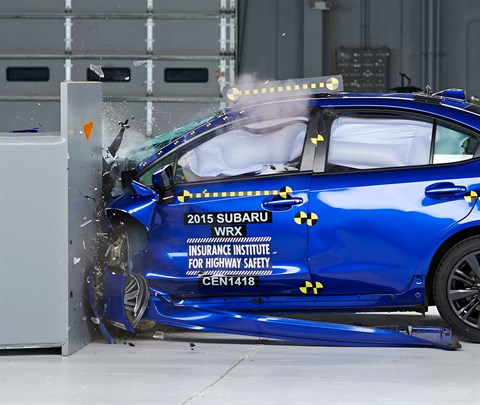
Action shot taken during the driver-side small overlap frontal crash test.
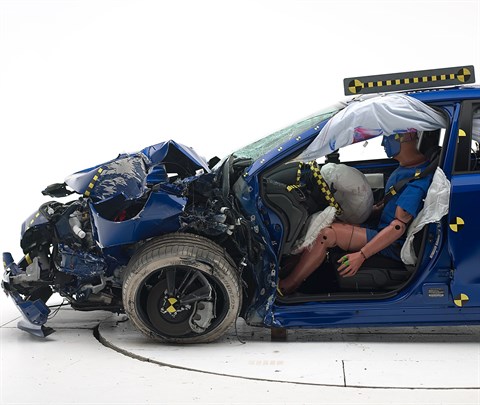
The dummy's position in relation to the door frame, steering wheel, and instrument panel after the crash test indicates that the driver's survival space was maintained well.
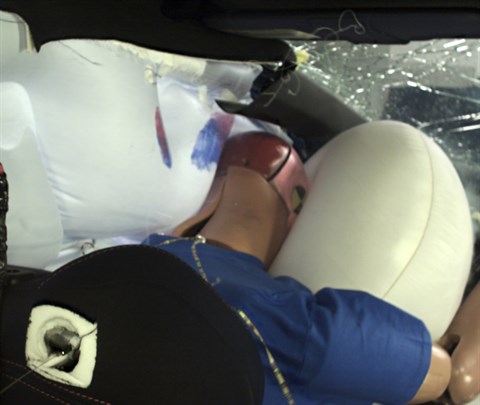
The frontal and side curtain airbags worked well together to keep the head from coming close to any stiff structure or outside objects that could cause injury.
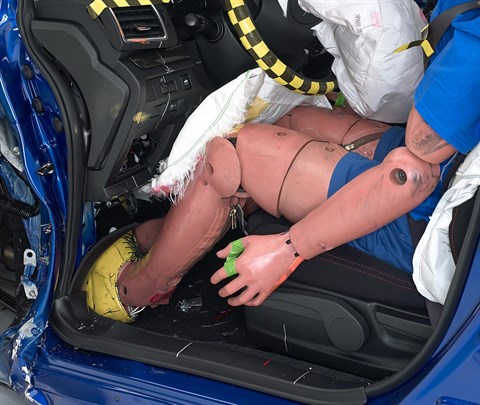
The driver's space was maintained well, and risk of injuries to the dummy's legs and feet was low.
Moderate overlap front: original test
Rating applies to 2015-21 models
Tested vehicle: 2015 Subaru WRX Premium 4-door 4wd
The Subaru WRX was redesigned for the 2015 model year. Although the car shares some of its design elements with the Subaru Impreza, there are now sufficient differences for the WRX to be rated separately.
| Evaluation criteria | Rating |
|---|---|
| Overall evaluation | |
| Structure and safety cage | |
| Driver injury measures | |
| Head/neck | |
| Chest | |
| Leg/foot, left | |
| Leg/foot, right | |
| Driver restraints and dummy kinematics | |
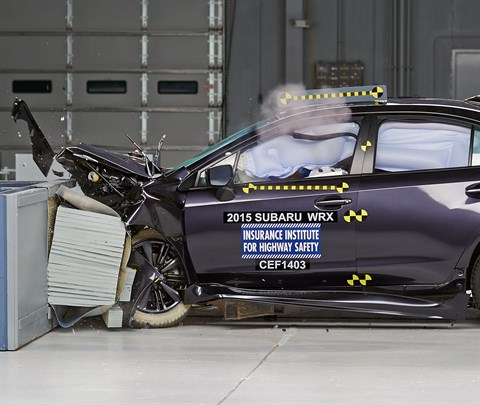
Action shot taken during the moderate overlap frontal crash test.
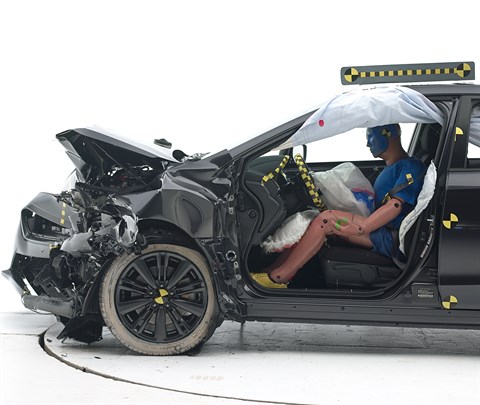
The dummy's position in relation to the steering wheel and instrument panel after the crash test indicates that the driver's survival space was maintained very well.

Small greasepaint marks on the side curtain airbag show that the dummy's head motion was well controlled as it moved forward into the frontal airbag and then back toward the seat during the crash.
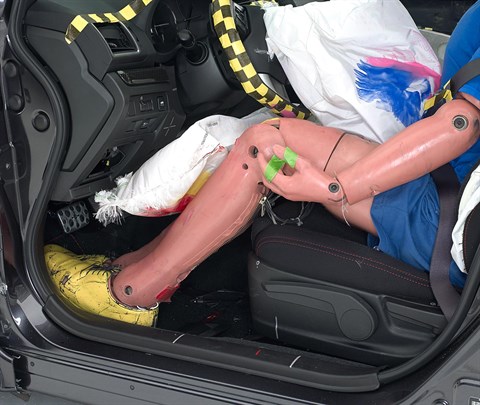
Forces on the lower left leg were high enough to indicate the possibility of injuries.
Side: original test
Rating applies to 2015-16 models
Tested vehicle: 2015 Subaru WRX Premium 4-door 4wd with standard front and rear head curtain airbags and standard front seat-mounted torso airbags
The Subaru WRX was redesigned for the 2015 model year. Although the car shares some of its design elements with the Subaru Impreza, there are now sufficient differences for the WRX to be rated separately.
| Evaluation criteria | Rating |
|---|---|
| Overall evaluation | |
| Structure and safety cage | |
| Driver injury measures | |
| Head/neck | |
| Torso | |
| Pelvis/leg | |
| Driver head protection | |
| Rear passenger injury measures | |
| Head/neck | |
| Torso | |
| Pelvis/leg | |
| Rear passenger head protection | |
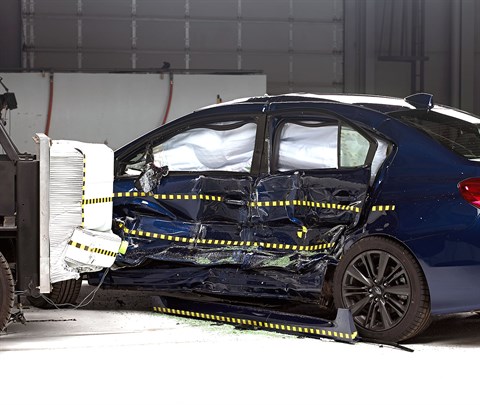
View of the vehicle and barrier just after the crash test.
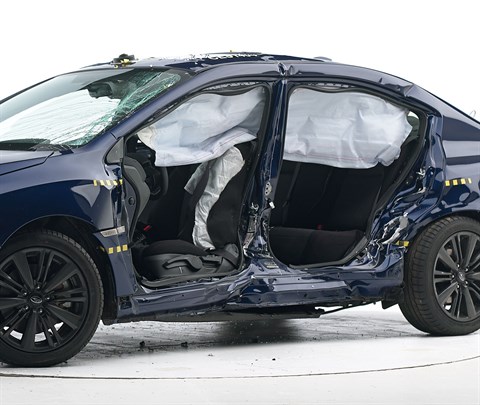
View of the vehicle after the crash with doors removed, showing the side airbags and damage to the occupant compartment.
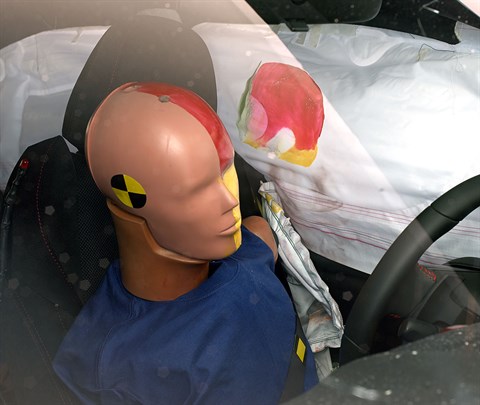
Smeared greasepaint shows where the driver dummy's head was protected from being hit by hard structures by the side curtain airbag.
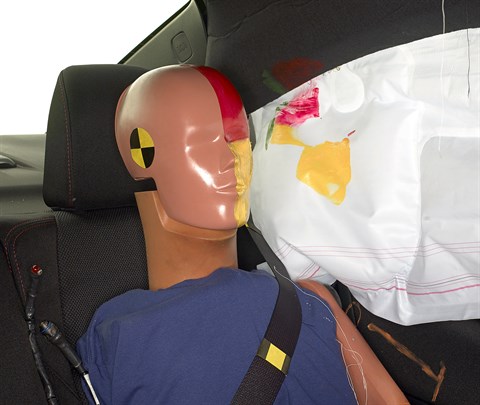
Smeared greasepaint shows where the rear passenger dummy’s head was protected by the side airbag.
Roof strength
Rating applies to 2015-21 models
Tested vehicle: 2015 Subaru WRX Premium 4-door 4wd
| Overall evaluation | |
|---|---|
| Curb weight | 3,420 lbs |
| Peak force | 17,641 lbs |
| Strength-to-weight ratio | 5.16 |
Head restraints & seats
Seat type: Manual cloth seats
| Overall evaluation | |
|---|---|
| Dynamic rating | |
| Seat/head restraint geometry |
About the head restraint & seat test
Currently, IIHS tests apply only to front seats.
